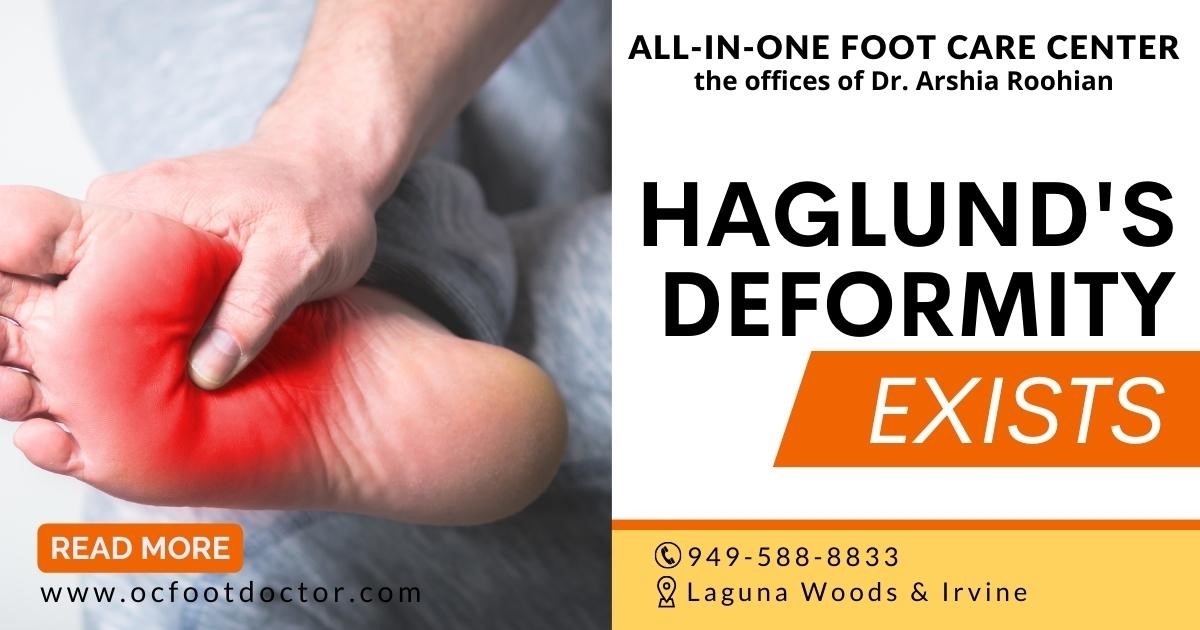Haglund's Deformity Exists

In what way is Haglund's Deformity different from other deformities?
An abnormality of the foot bone and soft tissues is Haglund's deformity. When the large, bony lump rubs against rigid shoes, the soft tissue near the back of the heel can become irritated. This can lead to bursitis when the boney section of the heel (where the Achilles tendon is located) becomes enlarged.As a result of bursitis, calcium can build up in the heel bone, increasing the bump size and causing pain. Bursitis occurs when there is inflammation of the sac between the tendon and the bone.
Those who wear stiff, closed-heels shoes are most likely to develop Haglund's deformity.
.jpg)
Haglund's deformity: what causes it?
As a result of frequent pressure on your heels, Haglund's deformity occurs. It may be caused by wearing shoes that are too tight or stiff in the heel. Haglund's deformity is sometimes referred to as "pump bump" as it often develops in women who wear pumps.
Haglund's deformity may also occur if you tend to walk on the outside of your heel, have a tight Achilles tendon, or have a high foot arch.
.jpg)
Haglund's deformity causes what symptoms?
One or both feet may be affected by Haglund's deformity. Symptoms include:
- Your heel is adorned with a bony bump
- Your Achilles tendon is attached to your heel and is causing severe pain
- At the back of your heel, there is a fluid-filled sac called the bursa
- The area surrounding the inflamed tissue is red
What is the diagnosis of Haglund's deformity?
As Haglund's deformity exhibits similar symptoms to other foot issues, including Achilles tendonitis, it can be challenging to diagnose.
The appearance of your heel might help your doctor diagnose Haglund's deformity. In the event that your doctor suspects you have Haglund's deformity, they may order an X-ray of your heel bone. Your doctor can then determine if you have the prominent heel bone.
Orthotics are customized shoe inserts that stabilize your foot and may help relieve heel pain.
.jpg)
What is the treatment for Haglund's deformity?
There are several nonsurgical treatment options for Haglund's deformity, including:
- Clogs, or shoes with an open back
- Ibuprofen (Advil, Motrin IB) and aspirin (Bufferin) are nonsteroidal anti-inflammatory drugs (NSAIDs).
- To reduce swelling, apply ice to the bump for 20-40 minutes per day
- Treating yourself with ultrasounds
- Massages for soft tissues
- Orthotics are worn
- Reducing pressure from your shoes by wearing heel pads
- A cast or boot that immobilizes the body
When minimally invasive treatment methods don't work, your doctor may recommend surgery to treat Haglund's deformity. During surgery, the excess bone is removed from the heel and smoothed and filed down, reducing pressure on the bursa and soft tissue.
If your Achilles tendon is damaged and your doctor needs to repair it, you may be put to sleep with general anesthesia during the surgery.
You may need crutches for a few days or weeks after surgery. You will likely be given a boot or cast as protection for your foot. It may take up to eight weeks for you to fully recover.
Your doctor may ask for an X-ray from time to time to ensure that your foot is healing properly. You will need to wear a bandage for at least seven days. After two weeks, your stitches will be removed.
What are the methods used to prevent Haglund's deformity?
Haglund's deformity can be reduced by taking good care of your feet:
- For long periods of time, stay away from shoes that have tight, stiff heels.
- Hard surfaces and steep hills should be avoided when running.
- Don't wear shoes with closed backs.
- Don't forget to wear non-slip socks with padded soles.
- Keep the Achilles tendon loose by performing stretching exercises.
In what way are things likely to change in the long run?
As long as you take the precautions mentioned above, you should not have to worry about Haglund's deformity recurring. However, some people may experience their symptoms reappear after proper treatment.
You can contact our office at 949-588-8833 , or visit our website at https://www.ocfootdoctor.com/ Our offices are located in Laguna Hills, Irvine, Mission Viejo, Aliso Viejo, Lake Forest, Foothill Ranch, and Costa Mesa.


